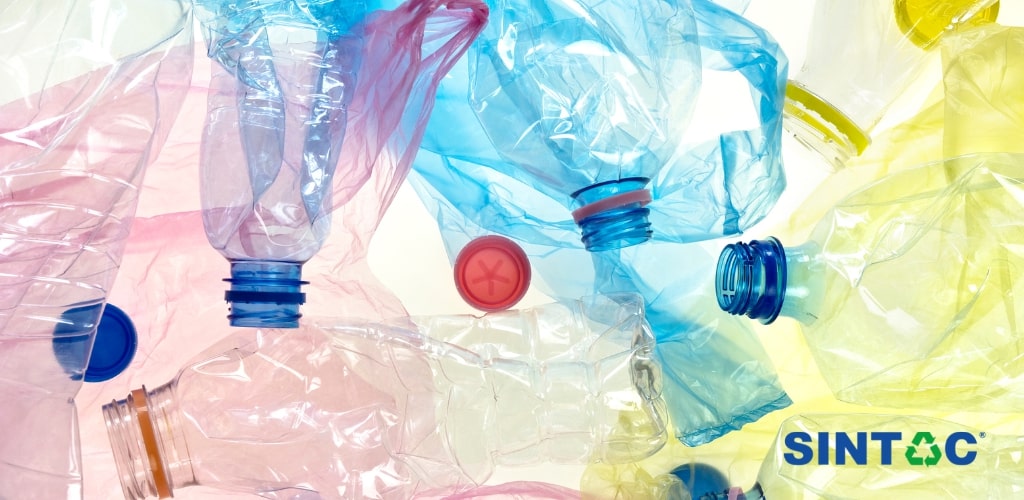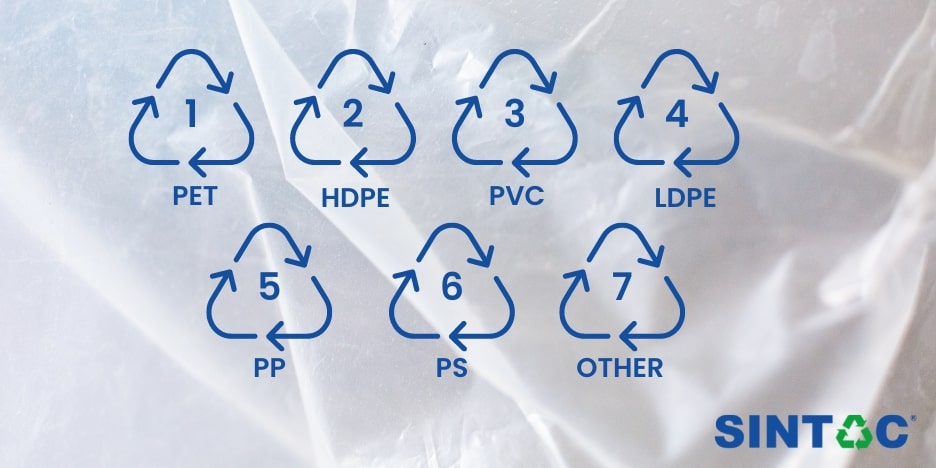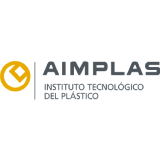How is plastic recycled?
Since the chemist Leo Baekeland invented the first synthetic plastic in 1907, this material has gone from being an unknown to an indispensable material. We use it to make packaging, toys, car parts and household appliances. Its widespread use has brought countless benefits, but also poses a threat to the planet. If plastic waste is not managed properly, it can end up in the seas and oceans, putting them at risk. Recycling is seen as a solution to this problem and the plastic identification code is an effective tool to turn waste into a resource.
Do you know the plastic identification code?
Although we may have become accustomed to seeing it on lightweight packaging, the plastics identification code is no more than 40 years old. It was first used by the American Society of the Plastics Industry in 1988 to identify the different types of plastics and thus facilitate their separation and subsequent recycling. Thanks to its simple design and, above all, its great usefulness, this symbol quickly became widespread and an indispensable tool for both manufacturers and producers.
Today, there is no bottle, bag or tray without a plastic identification code. It helps us to:

Classify the different types of plastic according to the same criteria: this symbol is universal. All countries, regardless of their origin, can recognise it, read it and know the type of plastic used in the production of a specific container.
To speed up the management and treatment of plastic waste: just by checking the number of the identifier, it is possible to know the amount of resin contained in the plastic and whether it can be recycled or not.
Promote recycling: by grouping plastics into seven different types, recycling is facilitated. We must not forget that, in order for this material to be used, it must be recycled.
What types of plastics can be recycled?
There are as many types of plastics as there are possibilities offered by this material in everyday life. However, in order to be used and converted into new products, they must be recycled with plastics of the same category or classification. For example, although Polyethylene Terephthalate (PET) and Polyvinyl Chloride (PVC) are plastics, they do not belong to the same typology and therefore cannot be mixed during the recycling process.
That is why it is so important to know what type of plastic each product is made of and why this code has marked a turning point for the industry.
Plastic number 1 – PET
When we refer to plastic number 1, we are referring to Polyethylene Terephthalate (PET). It is the most widely used plastic for the manufacture of food packaging. The reason is to be found in its characteristics: it is light, it is transparent and it is easily recyclable.
Plastic number 2 – HDPE
This code refers to High Density Polyethylene. You may not know it by name, but you are probably aware of its applications: supermarket bags, milk or juice bottles, yoghurt pots, cleaning and personal hygiene containers. It is a plastic that is easy to transform.
Plastic number 3 – PVC
Plastic number 3 refers to Polyvinyl Chloride (PVC). Along with PET, it is one of the most popular and widespread plastics. It is also one of the most resistant. Products such as detergent bottles, toys, car parts, pipes or shoe soles are made of this material.
Plastic number 4 – LDPE
Number 4 groups together products made from Low Density Polyethylene (LDPE), a type of plastic used in the manufacture of bags and laboratory or cosmetic packaging. One of its main characteristics is its great flexibility.
Plastic number 5 – PP
Number 5 refers to Polypropylene (PP). It is one of the most commonly used plastics for the production of products that require high resistance to heat and steam. The containers we use to heat food in the microwave are usually made of this material.
Plastic number 6 – PS
When we talk about plastic number 6, we are talking about Polystyrene (PS), a clear, rigid plastic that is often used for cutlery and cosmetic packaging.
Plastic number 7 – Other
Number 7 groups together those products that, because they are made of more than one plastic, cannot be recycled. In this typology we would find Styrene Acrylonitrile (SAN) or Acrylonitrile Butadiene Styrene (ABS), for example.
How to identify the types of recyclable plastics
One of the main characteristics of the plastics identification code is that it is easily identifiable and readable by manufacturers and producers. Composed of an alphanumeric code, it allows us to find out whether a product is made from recyclable plastics or not. To find out, we need to look at the following data:
Number: there are seven numbers. The first six numbers refer to six types of plastic; the seventh number refers to materials that cannot be recycled.
Acronyms: there are six acronyms, the same as recyclable plastics. They refer to the type of material used.














